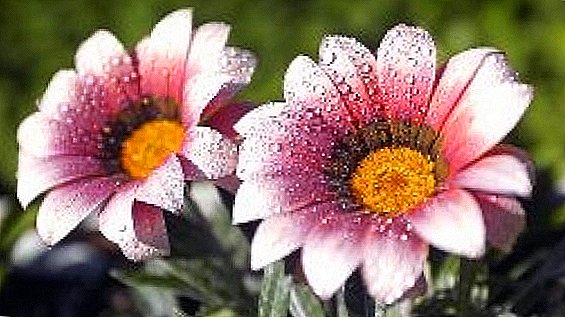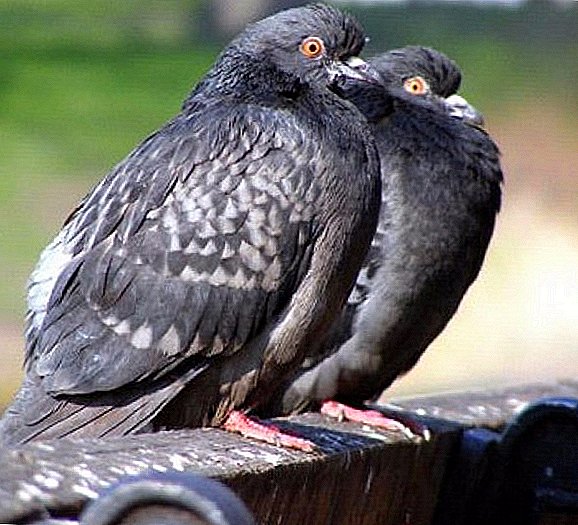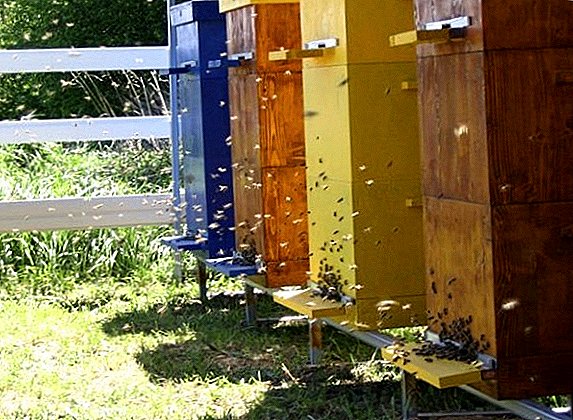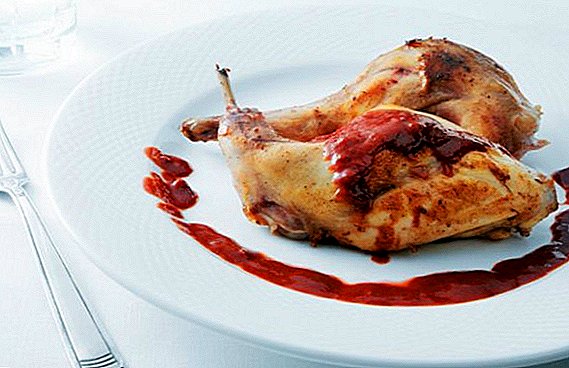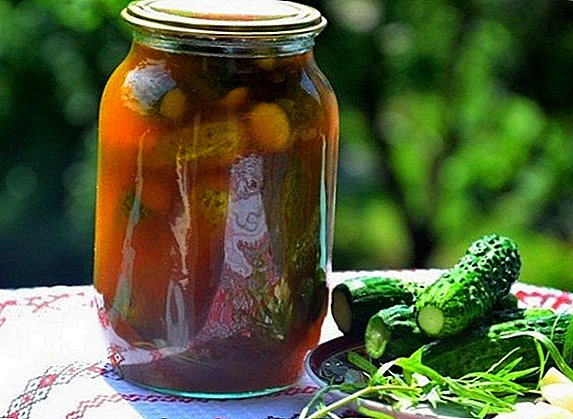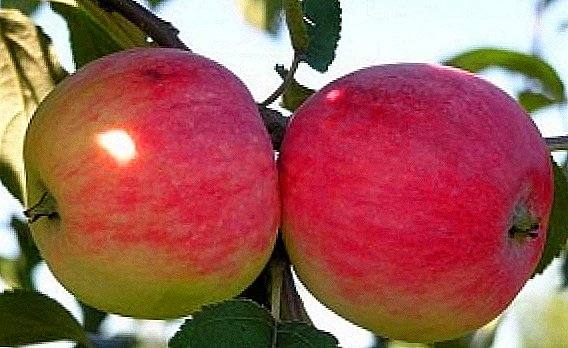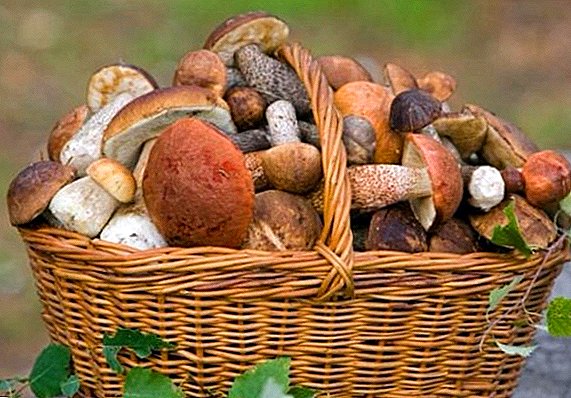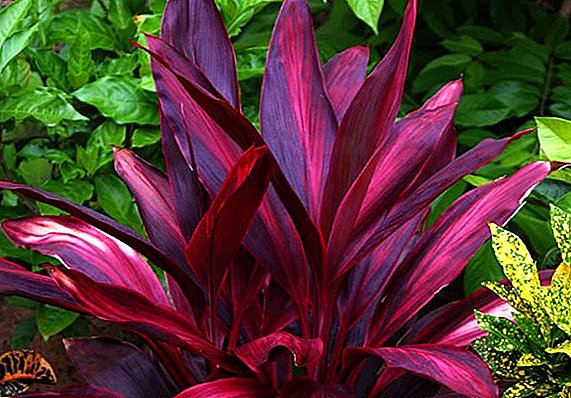 Cordilin genus consists of 20 species of evergreen plants belonging to the family Dracena (agave). Territory popularization - the tropics and subtropics of Australia, Asia, Africa, and Brazil. In this article we will talk about the most common types of cordilins.
Cordilin genus consists of 20 species of evergreen plants belonging to the family Dracena (agave). Territory popularization - the tropics and subtropics of Australia, Asia, Africa, and Brazil. In this article we will talk about the most common types of cordilins.
Cordilina is a tall plant in the form of shrubs or subshrub. In the natural environment it grows up to 3-5 m, but with a home content it is no more than 1.5 m. The long straight trunk covers large bright green leaves, which eventually fade and fall off, which gives it even more similarity with a palm tree.
In this article we consider the most popular types of cordilin.
Australian or South
Widespread in New Zealand. Lives in wet valleys and on rocky open slopes. The tree reaches 12 m in height, the trunk near the ground is noticeably thicker. The leaves are green, xiphoid, about 1 meter in length, leathery, with many light green veins arranged in parallel.  The plant has six-petal whitish flowers with a diameter of about 1 cm, with a fragrant aroma. Inflorescence - whisk, 50-100 cm in length. Fruits - berries of white color, diameter - 5-7 mm.
The plant has six-petal whitish flowers with a diameter of about 1 cm, with a fragrant aroma. Inflorescence - whisk, 50-100 cm in length. Fruits - berries of white color, diameter - 5-7 mm.
Cordilina south is used to make fiber. The stem and roots are the material for weaving ropes. Sheets are used to make cloth, and some young ones are even used as food. Tree sap is characterized by antibacterial qualities.
Did you know? In connection with the similarity with the Cordilina palm tree, such popular names as "Cornish palm", "Torbay palm" or "Isle of Man island" were given. There is another no less interesting name - "cabbage tree", invented by James Cook.This variety is popular with florists. Grow it in greenhouses, greenhouses. Southern cordilina - undemanding in care. It responds well to home conditions, including closed rooms.
 In the summer, it is recommended to take it outside, in winter - to ensure a low temperature (3-5 ° C). This species can be propagated by seeds and cuttings of young offspring.
In the summer, it is recommended to take it outside, in winter - to ensure a low temperature (3-5 ° C). This species can be propagated by seeds and cuttings of young offspring.Eglitza, myrtle, chamelacium, heather, acacia, calmia, cypress, jasmine, cotoneaster, tabernemontane, privet plant are also referred to evergreen shrubs.
Benksa
Occurs in forests near New Zealand. It has a slender, straight trunk, 1.5-3 m tall. The leaves are elongate-lanceolate (60-150 cm), pointed, straightened up, gathered in tight bunches.
The top of the sheet is colored green, the bottom is gray-green with well-visible veins. The scape is about 15–20 cm long. The flowers are white, placed on small stalks, often without peduncles.
This species adapts well, so you can create different living conditions. During the warm period it is good to leave in the fresh air, in the winter - cool, sufficiently lighted rooms. The optimum temperature is 6-8 ° C. 
Apical or shrub
Range - East India, Northeast Australia, the Hawaiian Islands. Low tree, reaching a height of 2-3 m, as Cordilina frutikoza. The stem is thin, lignified, with a diameter of 0.6-1.5 cm, sometimes with many branches.
The leaves are lanceolate, oblong, up to 30-50 cm in length and 7-10 cm in width, multicolored, with distinctly protruding veins, covered with a stalk and apex. Petiole (10-15 cm) straightened up, grooved. Inflorescence is a weakly branched panicle.
The flowers are white or lilac, have small stalks.
Today, there are many modifications of the Cordilina shrub with a different color of leaves. Thus, the Red Edge variety is characterized by a pale yellow stripe in the middle and pinkish-red edges.  Cordilina Snow is distinguished by white lines, white-pink stripes are typical for Lord Roberts, and Joungi sheets are colored red-brown.
Cordilina Snow is distinguished by white lines, white-pink stripes are typical for Lord Roberts, and Joungi sheets are colored red-brown.
Unlike previous species, Cordilina apical needs more attentive care.
Important! It is necessary to choose a place protected from drafts for the Cordilina.Requirements for growing:
- warm room (18-20 ° C all year round);
- bright light;
- high humidity;
- frequent abundant spraying of the leaves.
Like Cordilina, bright light is also loved by pedilanthus, amorphophallus, domestic cacti, mirabilis, hoya, balsam, pentas, aglaonema.At home it grows very slowly and can reach a height of only 25 cm.
Propagate this species by cuttings from the tips of the shoots or by dividing the rhizomes. Moreover, in order for the cuttings to quickly root, it is necessary to provide a high air temperature (26-27 ° C), high humidity and warming the ground to 25 ° C. 
Kiwi
Homeland - Northern Australia. In the natural environment it can grow up to 2-3 meters, and at home content - 1-1.5 m. The leaves are firm, have roundish edges, combine dark green, pink and yellow tones, combining in different patterns.
It is distinguished from other species by wider sheets, which eventually die off, revealing trunks. On the sides continuously formed new shoots suitable for transplanting.
Inflorescences are paniculate, generously dotted with small white buds. However, with home maintenance almost does not bloom.
Did you know? The name of the plant comes from the Greek word kordyle and is translated as a knot. So scientists have noted the specificity of the roots - a kind of nodular thickening.Cordilina kiwi - undemanding plant, so keep it in room conditions quite easily. There is no need for high humidity or high temperature. The rest period is not observed, it does not lose its color for a whole year.

Red
The plant was also born in Australia. In nature, it grows as shrubs 3-4 m in height, often not divided into branches. Sprouts reach a thickness of 0.6-2.5 cm.
The leaves are lanceolate, 30-50 cm long and 3.5-4.5 cm wide, oval, leathery, have a dark green color on both sides, as well as a combination of red and burgundy stripes, streaks are clearly visible.
Petiole trough-shaped, elongated by 10-15 cm. Dissolves purple flowers in summer. Also brings bright red fruit with a diameter of about 10 mm.
Did you know? For the first time, the German biologist Carl Friedrich Otto described Cordilin Red. The specific name comes from the Latin word "ruber", which means red.This plant is well perceived by staying in cool, lit rooms. In the summer it is recommended to take out to fresh air. The ideal temperature for winter maintenance is 6-8 ° C. It is also important to provide wet soil. Cordilina red is sufficiently resistant, so it can do without proper care for several days.
 You can propagate as seeds and cuttings.
You can propagate as seeds and cuttings.Undivided
This species originated from New Zealand. Plants grow up to 10-12 m in height. Possess a thin, but durable, stiff stem that does not split into branches. Leaves are belt-shaped, elongated (70-150 cm), pointed, dull-green, bottom - gray tint, in the middle a red vein is clearly distinguished.
Inflorescence compacted, forked, tilted down, with a variety of white or reddish flowers.
Cordilina undivided - not choosy to care, can be in a closed room for a long time. During the warm period, it is desirable to leave it in the fresh air. In winter, there are cool large rooms with a temperature of 3-5 ° C.
Important! Neither drying nor excess moisture in the soil should be allowed.Bred by seed or rooting of the upper parts of the young processes.

Straight
It grows in the subtropics of Eastern Australia, often in forests and bushes. The trunk is thin, unbranched, 1.5-3 m in height. The leaves are oblong-lanceolate, pointed, 30-60 cm in length, leathery, bright green on both sides, fit snugly to each other.
The width of the leaf in the center is 1.8–3 cm; it narrows to a cutting of 0.6–1.3 cm.
Cordilina direct in summer prefers to be outdoors, in winter - non-hot rooms (5-7 ° C).  Cordilins are mostly undemanding, colorful plants that are well suited both for home keeping and for gardening office space.
Cordilins are mostly undemanding, colorful plants that are well suited both for home keeping and for gardening office space.



